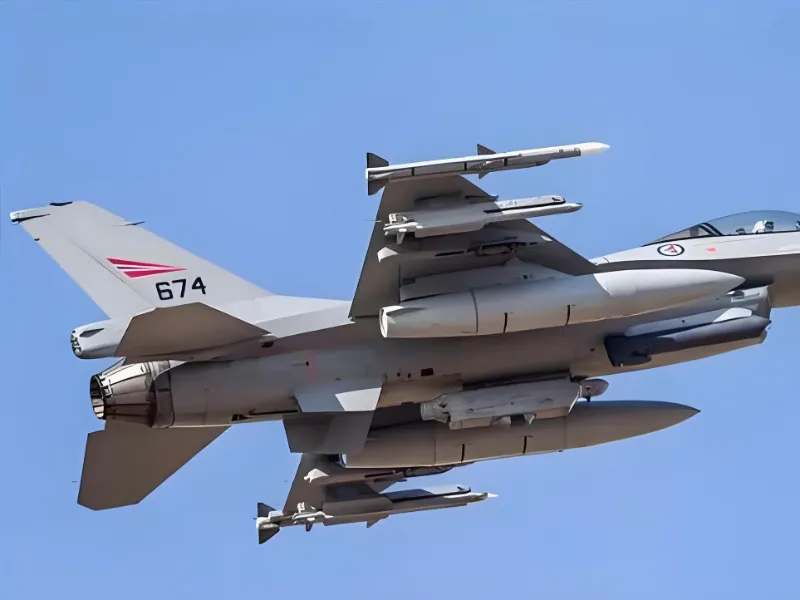- In a significant push to gain a technological edge in warfare, Ukrainian startups are rapidly developing artificial intelligence (AI) systems to pilot a vast fleet of drones. This innovation aims to transform warfare as combatants strive to outmanoeuvre each other with advanced technology. Amidst increasing signal jamming by Russian forces, Ukraine is expediting the deployment of AI-enabled drones along the front lines, hoping that these unmanned aerial vehicles (UAVs) can operate in larger groups and execute more complex tasks.
- The urgency to develop AI-enabled drones in Ukraine stems from the evolving nature of electronic warfare (EW). Both Ukrainian and Russian forces are deploying EW systems that disrupt the signals between drone pilots and their UAVs. This signal jamming has particularly impacted the effectiveness of small, cheap first-person view (FPV) drones, which became a primary method for both sides to target enemy vehicles in 2023. As signal jamming increases, the hit rates of these FPV drones have dropped significantly.
OUR TAKE
The Ukrainian startups are turning into tech wizards on the battlefield, frantically developing AI-powered drone armies. It’s like the drone swarm tactics we only saw in video games are becoming a reality. The folks at Swarmer, with their Styx system, sound like they’re creating a “wolf pack” of drones that can strategise and coordinate their attacks on their own, while human commanders just need to give the final green light. But let’s not forget, while AI makes drone operations efficient and safer, we also need to be cautious. We don’t want technology to become a double-edged sword. After all, if AI drones were to malfunction or get hacked on the battlefield, the consequences could be devastating. Let’s hope that these innovations in Ukraine truly bring a glimmer of hope for peace, rather than fueling the flames of conflict.
–Miurio huang, BTW reporter
What happened
In a significant push to gain a technological edge in warfare, Ukrainian startups are rapidly developing artificial intelligence (AI) systems to pilot a vast fleet of drones. This innovation aims to transform warfare as combatants strive to outmaneuver each other with advanced technology. Amidst increasing signal jamming by Russian forces, Ukraine is expediting the deployment of AI-enabled drones along the front lines, hoping that these unmanned aerial vehicles (UAVs) can operate in larger groups and execute more complex tasks.
The AI drone development in Ukraine is segmented into three primary areas: visual systems for target identification and drone navigation, terrain mapping for better navigation, and sophisticated programs enabling UAVs to operate in interconnected swarms. Among the companies leading this initiative is Swarmer, which is developing software that networks drones, allowing for instantaneous decision-making across the group. Human intervention is required only to approve automated strikes.
Swarmer’s CEO, Serhiy Kupriienko, explained the necessity of AI in scaling operations, stating that managing a swarm of 10 or 20 drones or robots is virtually impossible for human pilots. The company’s system, called Styx, coordinates a network of reconnaissance and strike drones, enabling them to plan their movements and anticipate the actions of other drones in the swarm.
Since Russia’s full-scale invasion in 2022, over 200 tech firms have emerged in Ukraine, with many civilians from IT backgrounds contributing to the development of drones and other devices to counter a larger enemy. Kupriienko noted that while human pilots struggle to manage more than five drones simultaneously, AI could handle hundreds. Moreover, automation protects drone pilots who operate close to the front lines, making them prime targets for enemy fire.
Although Swarmer’s technology is still under development and has only been tested experimentally on the battlefield, it represents a crucial step towards more autonomous military operations. Samuel Bendett, an Adjunct Senior Fellow at the centre for a New American Security, emphasised the need for human oversight in AI drone control systems to prevent errors in target selection, highlighting the ethical concerns surrounding autonomous weaponry.
Also read: Ukraine’s Kyivstar allocates $90 million to tackle cyberattack fallout
Also read: US court rejects challenges to FCC approval of SpaceX satellites
Why it’s important
The urgency to develop AI-enabled drones in Ukraine stems from the evolving nature of electronic warfare (EW). Both Ukrainian and Russian forces are deploying EW systems that disrupt the signals between drone pilots and their UAVs. This signal jamming has particularly impacted the effectiveness of small, cheap first-person view (FPV) drones, which became a primary method for both sides to target enemy vehicles in 2023. As signal jamming increases, the hit rates of these FPV drones have dropped significantly.
Max Makarchuk, the AI lead for Brave1, a Ukrainian government defense tech accelerator, noted that AI-operated FPV drones could potentially achieve hit rates of around 80%, a substantial improvement over current rates. To counteract EW threats, drone makers like Swarmer are developing features that allow drones to lock onto targets using their cameras, thus continuing their mission even if the pilot loses contact.
The shift towards AI-enabled drones is driven by the need for efficiency and cost-effectiveness. AI targeting systems, such as those run on a Raspberry Pi, can significantly reduce costs, making it feasible to deploy these systems en masse along Ukraine’s extensive front lines. This cost reduction is crucial given the high consumption of FPV drones in the conflict.
The development of AI-enabled drones in Ukraine not only aims to enhance military capabilities but also reflects a broader trend in modern warfare. As both sides in the conflict increasingly rely on technology, the integration of AI in military operations could redefine strategic advantages. By advancing AI drone technology, Ukraine seeks to mitigate the limitations imposed by electronic warfare and improve the precision and effectiveness of its military actions.
Ukraine’s rapid development of AI-enabled war drones represents a critical advancement in modern warfare, addressing both immediate tactical needs and long-term strategic goals. This technological evolution underscores the growing importance of AI in enhancing military capabilities and reshaping the dynamics of conflict.

